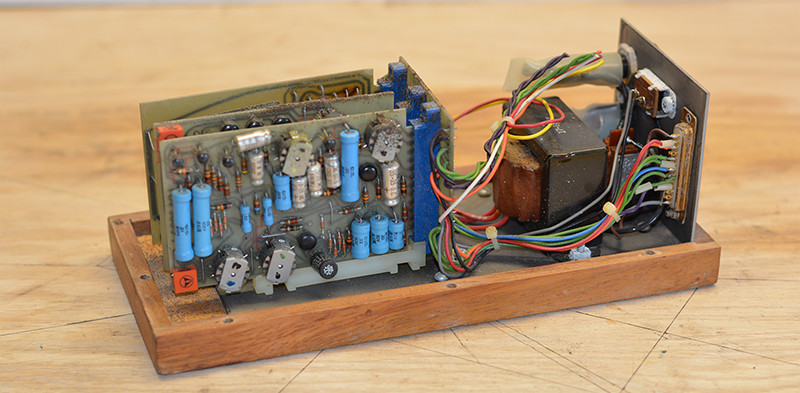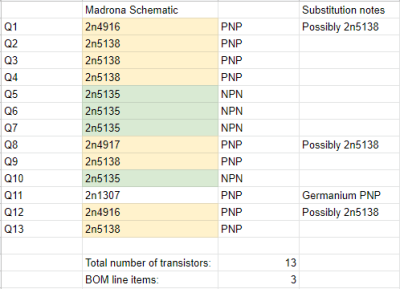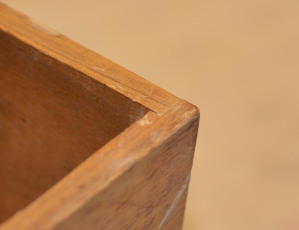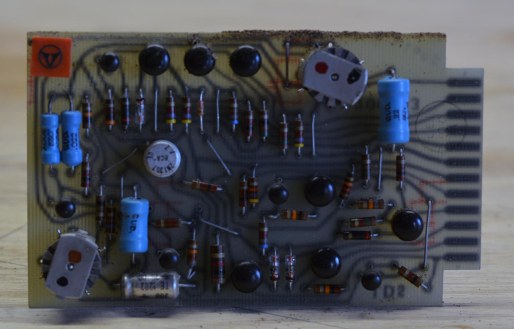50 year old modem: inside view

A few years ago, the author visited a flea market organized by W6TRW at the Northrop Grumman car park in Redondo Beach, California. There was a wooden box with a lock, a wooden handle and a DB-25 connector on the side between TVs resembling polar bears and a variety of chargers for phones and power supplies. Next to the connector - switch: half duplex - full duplex. The author understood what it is. Modem. Wooden modem Namely - a modem with acoustic coupling, released by Livermore Data Systems approximately in 1965.

')
The modem is still at the flea market. Immediately after photographing, the author bought it for $ 20.
Since not everyone knows what a modem with an acoustic interface is - a small history. The problem was that once the property of telephone companies were not just lines. They also had to rent telephone sets. Those readers who caught a daylap connected modems to the telephone lines directly. And then, when they made this modem, it was forbidden to do so. According to the American law of 1934, something could not be connected to the home telephone by any means whatsoever. In 1956, after the case of Hush-A-Phone Corp. v. United States rule softened: it became possible to mechanically connect. Hush-a-phone is what it is .
Formally, to connect various devices to the telephone line electrically in the USA was allowed in 1968 ( Carterphone solution ). But until 1978 this opportunity could not be used, since tariffs, specifications and certification methods were not developed. Therefore, from 1956 to 1978 there was a sense to use acoustically mated modems and answering machines. In practice, they were let out longer by inertia.
This modem, which is now on the table of the author - an integral but unusual page of history. It is manufactured before the Carterphone solution, and therefore cannot connect directly to the telephone network. It is designed before the development of many chips, which are now considered classic. The first version of this modem was released just a year later, Bell 103, the first commercially successful modem. Before you is an excellent example of how many possibilities can be “squeezed out” of only thirteen transistors. Then this modem was forgotten for a long time, until two videos were shot about it, one in 2009, the other in 2011:
Phreakmonkey video blogger got an early instance of a modem with a serial number of just over 200. These modems are distinguished by walnut cases, the details of which are connected by “dovetail tails”. According to phreakmonkey, it is possible to determine by this feature how old the modem is, because “swallowtails” are labor-intensive. Starting from the serial number 850, modems began to be placed in teak cases with box-shaped connections. Then the body parts began to connect the grooves. Livermore Data Systems needed to manufacture modems faster and faster.
In 2007, the blogger Brent Hilpert looked into such a modem and described its device . Particularly interesting is his scheme. All thirteen transistors in the modem are standard and widespread at that time. One germanium PNP transistor is used there for a reason incomprehensible to the author. Transistors of all these types and today it is easy to find in the old stocks. Only about twenty dollars - and in your hands the full set of transistors needed to repeat exactly the same modem. True, you will need other details, including miniature transformers.

Someone pulled out the acoustic pairing device from the modem, the rest is fully consistent with the documentation. There are three boards on the backplane. On the first - all parts of the PSU, except for the transformer, on the second - the modulator, on the third - the demodulator. The transistors 2N5138 affixed date: 37 week of 1969. It was not possible to establish the release date of the modem itself, but most likely, it was manufactured and shipped before 1970.


Dowel connection means late release modem





The author bought this modem just to keep it at home. This is a wooden modem, but hardly anyone of the author’s friends imagines how cool he is. This is an art object, in which so much of all unusual. The author wanted to fix it, but realized that it was impractical.
First, for this you will need to find the original acoustic coupling device. Because of his absence, the flea market visitors did not understand what the device was in front of them. The emblem of Livermore Data Systems and the serial number were originally located on this device, and now their absence only made it difficult for other visitors to identify the product as a modem, because they are not employees of computer museums. It is tempting, of course, to print the details of the acoustic pairing device, but will it reach your hands?
Secondly, the parameters of many capacitors “swam” in it. Of course, it is interesting to take and sort through all the boards, but if the author wants to get a working modem with acoustic pairing, there is a better option.
We are talking about an ingenious construction called “ toilet for data ” developed by the Chaos Computer Club in 1985 in response to a similar ban, which then continued to operate in Germany. It is easier to set up such a modem, but it has more features. It is made on the AM7910 microcircuit, which is still sometimes found on the market, and operates at speeds up to 1200 Bod. You can build a modem from scratch on it faster than using discrete transistors.
In general, there is no sense in restoring this wooden modem, but it turned out to be very interesting to disassemble, arrange a photo session and collect everything as it was. Almost all the electronics looked like this from the inside, as long as there were no microchips in it. But if suddenly the author gets an acoustic pairing device suitable for this modem, he will, of course, think again: maybe it is still worth undertaking repairs?
Source: https://habr.com/ru/post/446114/
All Articles